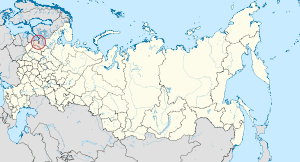St pet............to Leningrad...........back to St. Pet................................a function of the sea.............a city in Florida bearing the name of Russia's 2nd biggest city..........also a port.......on the Baltic.......which is a bit colder than the Gulf of Mexico...
Saint Petersburg
From Wikipedia, the free encyclopedia
"Leningrad" redirects here. For other uses, see Leningrad (disambiguation).
This article is about the city in Russia. For the city in the U.S. state of Florida, see St. Petersburg, Florida. For other uses, see Saint Petersburg (disambiguation).
| Saint Petersburg Санкт-Петербург (Russian) | |||
|---|---|---|---|
| — Federal city — | |||
Top left to bottom right: Peter and Paul Fortress on Zayachy Island,Smolny Cathedral, Moyka river with the General Staff Building,Trinity Cathedral, Bronze Horseman on Senate Square, and theWinter Palace. | |||
| |||
| Political status | |||
| Country | Russia | ||
| Federal district | Northwestern[1] | ||
| Economic region | Northwestern[2] | ||
| Established | May 27, 1703[3] | ||
| Federal city Day | May 27[4] | ||
| Government (as of March 2010) | |||
| • Governor | Georgy Poltavchenko | ||
| • Legislature | Legislative Assembly | ||
| Statistics | |||
| Area [5] | |||
| • Total | 1,439 km2 (556 sq mi) | ||
| Area rank | 82nd | ||
| Population (2010 Census)[6] | |||
| • Total | 4,879,566 | ||
| • Rank | 4th | ||
| • Density[7] | 3,390.94/km2 (8,782.5/sq mi) | ||
| • Urban | 100% | ||
| • Rural | 0% | ||
| Population (2015 est.) | |||
| • Total | 5,191,690[8] | ||
| Time zone(s) | MSK (UTC+03:00)[9] | ||
| ISO 3166-2 | RU-SPE | ||
| License plates | 78, 98, 178 | ||
| Official languages | Russian[10] | ||
| Official website | |||
Saint Petersburg (Russian: Санкт-Петербу́рг, tr. Sankt-Peterburg; IPA: [ˈsankt pʲɪtʲɪrˈburk] ( listen)) is the second largest city in Russia, politically incorporated as a federal subject (a federal city). It is located on the Neva River at the head of the Gulf of Finland on the Baltic Sea. In 1914 the name of the city was changed from Saint Petersburg to Petrograd (Russian: Петроград; IPA: [pʲɪtrɐˈgrat]), in 1924 to Leningrad (Russian: Ленинград; IPA: [lʲɪnʲɪnˈgrat]), and in 1991, back to Saint Petersburg.
listen)) is the second largest city in Russia, politically incorporated as a federal subject (a federal city). It is located on the Neva River at the head of the Gulf of Finland on the Baltic Sea. In 1914 the name of the city was changed from Saint Petersburg to Petrograd (Russian: Петроград; IPA: [pʲɪtrɐˈgrat]), in 1924 to Leningrad (Russian: Ленинград; IPA: [lʲɪnʲɪnˈgrat]), and in 1991, back to Saint Petersburg.
In Russian literature, informal documents, and discourse, the word "Saint" (Russian: Санкт) is usually omitted, leaving "Petersburg" (Russian: Петербург). In casual conversation Russians may drop the "burg" (Russian: бург) as well, referring to it as "Piter" (Russian: Питер).
Saint Petersburg was founded by Tsar Peter the Great on May 27 [O.S. 16] 1703. Between 1713–1728 and 1732–1918, Saint Petersburg was the imperial capital of Russia. In 1918, the central government bodies moved from Saint Petersburg (then named Petrograd) to Moscow.[11] It is Russia's 2nd largest cityafter Moscow with 5 million inhabitants (2012) and the fourth most populated federal subject.[6] Saint Petersburg is a major European cultural center, and also an important Russian port on the Baltic Sea.
Saint Petersburg is often described as the most Westernized city of Russia, as well as its cultural capital.[12] It is the northernmost city in the world with a population of over one million.[13] The Historic Centre of Saint Petersburg and Related Groups of Monuments constitute a UNESCO World Heritage Site. Saint Petersburg is also home to The Hermitage, one of the largest art museums in the world.[14] A large number of foreign consulates, international corporations, banks, and other businesses are located in Saint Petersburg.







Comments
Post a Comment